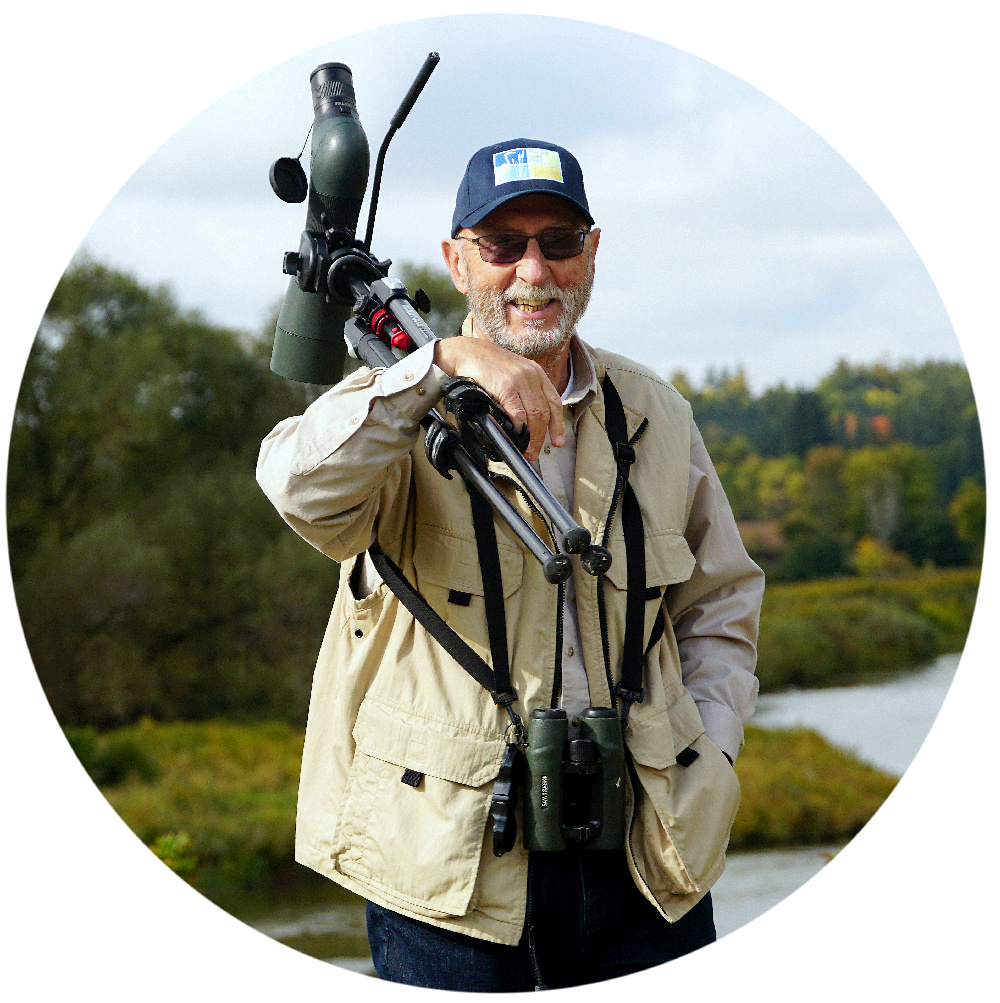Geology is not easy, and this book makes a valiant attempt to simplify the process of identifying rocks, even for the layman with little or no experience. As the author points out, "learning to identify rocks is a risky business".
Even from the first cognitive stages of childhood we are at a disadvantage when it comes to rocks. Early in their development small children learn to identify familiar flowers and animals, and have a name for them. A rock or a pebble on the other hand remains just that - a rock or a pebble, with no clue as to its name, origin or composition, or anything else about it.
It would be a rare parent indeed, who, having encouraged a child to look at a daisy, or a sparrow, followed up with "See that biotite schist, Jenny!"
Yet a better appreciation of rocks and rock formations is within the grasp of the amateur naturalist and citizen scientist. Jürg Meyer has devised a systematic method whereby rocks within the three groups, sedimentary, igneous, and metamorphic, can frequently be identified, with a good degree of accuracy. There will always be difficult samples that defy identification, but this is equally true for scientific geologists who need laboratory samples to confirm their discovery under powerful microscopes.
Furthermore with no more than a keen ability to observe, and a pocket knife and a magnifying glass, component minerals can be identified. If you are really lucky, a fossil or two may make the discovery even more exciting.
Go through this book carefully, learn its methods, apply yourself diligently, and you too can become a cut above the average rock hound.
You should expect no less of yourself!
Rocks and Rock Formations - Princeton University Press
Author: Jürg Meyer
US$19.95 £14.99 - ISBN: 9780691199528
Published: 21 June 2021
192 pages - 534 colour illustrations
5.5 x 8.5 inches (13.75 x 21.25 cm)




















I must confess, I belong to the category of rocks, stones and pebbles, and the only rock I can identify is the one combined with roll!. But this book seems to be good even for the unenlightened, like me. I wish you a happy Sunday, take care, have fun and eat lots of good food! Hugs, Valerie
ReplyDeleteMy father would have loved that book - and strongly urged his daughter to read and use it too. Thanks David.
ReplyDeletePeople conquer the rocks, they don't have time to read their secrets...
ReplyDeletePS Some construction sites are more negligent, especially on Saturdays and Sundays, when they are not controlled.
My youngest son had a teacher who was "stonemad", David. She knowed everything about stones, and I guess she would have loved this book.
ReplyDeleteAnd some people have teachers who are just stoned!
DeleteHello,
ReplyDeleteMy son was a rock collector, he would enjoy this book. Thanks for the review.
Have a great new week!
I think that many children are rock collectors, but few continue the passion into their later years.
DeleteWhat a great sounding book. As a child, I was fascinated by anything "shiny" in rocks, but I never delved much further than that. Here in Connecticut (CT) US, rocks "grow" like potatoes. No matter how many times one tills one's garden, and removes all of the rocks uncovered, the next year, more are found. Interestingly, I think (but I'm uncertain) CT brownstone was used to build some buildings and for gravestones.
ReplyDeleteWhen my daughter was in grade school I helped her with a project where we collected twenty-four samples of rocks and minerals and mounted them on a display board and labelled them. She may still have it. I must ask her.
DeleteRock formations are very interesting. There was a massive unique inverted pyramid in our county that unfortunately tumbled over just before we moved to the area. Since the region had been under the Atlantic at one time, it created this awesome piece when the waters receded.
ReplyDeleteThere must be fossils of marine organisms galore to find in that area.
DeleteSome years ago I used to lead groups of walkers through the English countryside and part of my job was to "interpret" the landscape to them. I was always surprised at how interested both young and old were in the geology and how many of them had always thought it was far too complicated for them to learn. Too many books only make things more complicated as they try to explain them.
ReplyDeleteThis is a book that would really help them to improve their level of proficiency. It's a component of a nature walk that is seldom addressed, but merits the interest of everyone. It is common to all other pursuits. The substrate influences the plants, and that dictates the mammals and the birds....and so on. I can only imagine that you would have been a fine leader of those walks, John.
DeleteRockformations are amazing. Having seen the Ramon crater in the Negev dessert with the amazing colours of sandstone, orange, red, yellow it surprised me. You can see the layers of ages. Stunning.
ReplyDeleteRegards,
Roos
I envy you this experience in Israel, Roos. I once had a trip planned, but it was during one of the intifadas and suicide bombings were happening all too frequently, and I cancelled. Whether I will ever make it there now is doubtful.
DeleteOtro de los libros que me interesan, me encantan las piedras... tengo varias en casa. Abrazos.
ReplyDeleteQue bueno, Teresa.
DeleteGood review, David.
ReplyDeleteBack in another lifetime, I once dated a geologist who made a valiant effort to explain his profession to me. Perhaps it is telling that I married an editor instead!
ReplyDeleteHari OM
ReplyDeleteIt would be a rare parent indeed, who, having encouraged a child to look at a daisy, or a sparrow, followed up with 'See that biotite schist, Jenny!' I LOLd... my dad was a keen amateur and passed that on to me. I have several books on the subject and now include in my close circle of friends and actual geologist - so, got that covered! YAM xx
And then some children have rockhounds for fathers. I spent many childhood vacation hours with my dad, squatting in mountain creeks, looking for gems. Found a few, too.
ReplyDeleteYou do find the most amazing books! Thanks for opening my eyes to new things.
ReplyDeleteRocks and stones are a delight to see and not enough people know what they are made of, how they got there and so on - me included.
ReplyDeleteGeology is a step too far for me at my time of life, David, although I nearly went down that route when I started dabbling in fossil collecting. I think that it was a lack of geological understanding that caused the fossil interest to wain in the face of other interests coming to the fore.
ReplyDeleteI would imagine that even a short foray into fossil collecting would have been fascinating, Richard.
DeleteI remember as a child pouring through a set of encyclopaedia type books that my dad has, one was all about geology and being fascinated by the colours but must admit names did not stay with me! ID guides will always hold a place on my bookshelf even if it's one I wouldn't perhaps use as often!
ReplyDeleteSometimes it's fun, Pam, to find an interesting rock, take it home and then set about identifying it. It can be a bit challenging but always worthy of the effort.
DeleteIt is!
DeleteThanks for your book recommendation! I collect stones with an interesting pattern and color and I already have quite a large collection. Maybe someday I will show it on my blog!
ReplyDeleteHave a happy new week !
I would be very interested in seeing them, Ela, and they will remain still while you photograph them!
DeleteThe rock person in our family is our eldest son - he is our expert - he has a PhD in geology.
ReplyDeleteThen he would be far more expert than most! A friend of mine is a retired Professor of Geology at the University of Waterloo.
DeleteMany thanks for the review.
ReplyDeleteAll the best Jan
I had to look up biotite schist, haha. I was fortunate to have a mother who knew so many different types of rock and minerals in Nevada where we grew up, so while we might not always know the scientific name we always knew the common name. I think this book would be interesting to me.
ReplyDeleteI experience a period of rock collecting during my pre-teen years when we lived in Arizona for six months. We wandered about some in the desert and did some rock hunting. I recall some that come to mind -- finding some lovely agates of varied varieties especially a lovely one that when broken open was white with dark blue patterns inside as I recall a favorite. There was the red jasper and breaking off an interesting piece from a much larger rock which turned out to be lovely amethyst among the stones we gathered. We could never find the rest of that large amethyst stone when we tried to locate it again.
ReplyDeleteJe regarderai si ce genre de livre existe en Français. J'habite une ancienne carrière de granit, je suis au milieu des rochers, granit rose, bleu, gris. Bonne journée
ReplyDeleteHi David - I love geology and seeing the different formations - we're lucky here in the UK - we have almost all types of rocks from 2,500 million years ago to the recent crumbly chalk of our Sussex coast (145 - 66 million years ag) - this little island is formed of many parts of other continents - hence the multitude of geological interests we have here. I wrote about it briefly in 2014 ...
ReplyDelete"Britain’s rocks are of almost all geological ages from the Archean Eon of 2,500 million years ago or older ... to the younger rocks of the Cretaceous period (145 – 66 million years ago) found down here in Sussex – the crumbling cranky chalk cliffs – that are so good for champagne and wine!"
The post titled Geology, Gneiss, Groynes and Grippers - as you can note part of 2014's A-Z. Fun alliteration to write up about ... cheers Hilary
Hola David. Me gusta la Geología, pero es complicada. Parece un libro interesante y para tener en cuenta. Muchas gracias. Abrazos y besos.
ReplyDeleteWhat an interesting variety of birds!
ReplyDeleteThat Belted Kingfisher looks too funny, oh, how sweet.
I agree, rocks can be very interesting, we saw some amazing formations and colors, structures in Australia. Sadly taking pictures back then was expensive, so most is but in my head. Also... you never knew if the film rolls survive the heat in the car! (They did)
I collected rocks as a child and I had two geology kits. I learned to sort samples into the categories of igneous, sedimentary, and metamorphic.
ReplyDeleteI guess today they'd call me a nerd.
I'm not a rock expert but I did learn some basic information about different kinds of rocks back when I did a geography unit at university a long time ago. As a result whenever I can I do pass on that information to my grandchildren - that's how I spent a pleasant hour this afternoon in fact. It'll be interesting to see if they retain an interest when they're older.
ReplyDelete